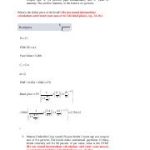Content

While you can create an adjusting trial balance manually, or by using spreadsheet software, it’s far easier to do so when using accounting software. Here are some of The Ascent’s top picks for creating an adjusted trial balance. What’s left at the end of the process is called a post-closing trial balance. Tax adjustments help you account for things like depreciation and other tax deductions. For example, you may have paid big money for a new piece of equipment, but you’d be able to write off part of the cost this year. Tax adjustments happen once a year, and your CPA will likely lead you through it.
- You will notice there is already a debit balance of $23600 in this account from other cash transactions during the month.
- Some events are not recorded daily because it is not efficient to do so.
- Showed total assets $150,000, total liabilities $70,000, and owner’s equity $80,000.
- Accruals have to do with revenues you weren’t immediately paid for and expenses you didn’t immediately pay.
- DepreciationDepreciation is a systematic allocation method used to account for the costs of any physical or tangible asset throughout its useful life.
- T/F Salaries and Wages Receivable is the account used to record salaries and wages to employees for work performed during the current period.
If you’ve ever wondered how accountants turn your raw financial data into readable financial reports, the trial balance is how. An unadjusted trial balance is a listing of all the business accounts that are going to appear on the financial statements before year-end adjusting journal entries are made. That is why this trial balance is called unadjusted. The income statement approach does have an advantage if the entire prepaid item or unearned revenue is fully consumed or earned by the end of an accounting period. No adjusting entry would be needed because the expense or revenue was fully recorded at the date of the original transaction.
Adjusted Trial Balance
For unearned revenue, for example, when the business receives an advance payment from the customer for services yet provided, the cash received will trigger a journal entry. When the business provides the services for the customer, the customer will not send the business a reminder that revenue has now been earned. An adjusted trial balance is an internal document that summarizes all of the current balances available in general ledger accounting. The adjusted trial balance is prepared to show updated balances after adjusting entries have been made. A cash flow statement shows how cash is entering and leaving your business. While the income statement shows revenue and expenses that don’t cost literal money , the cash flow statement covers all transactions where funds enter or leave your accounts. In the first step of the accounting cycle, you’ll gather records of your business transactions—receipts, invoices, bank statements, things like that—for the current accounting period.

Part A: Analyze, Record & Post Adjusting Entries, Prepare Adjusted Trial Balance has a credit balance of $100. This is posted to the Supplies T-account on the credit side . You will notice there is already a debit balance in this account from the purchase of supplies on January 30. The $100 is deducted from $500 to get a final debit balance of $400. It deferred the recognition of the revenue until it was actually earned. The customer already paid the cash and is currently on the balance sheet as a liability.
Step 2: Post transactions to the ledger
The unadjusted trial balance contained the accounts shown below. Prepare an income statement and an owner’s equity statement for November and a balance sheet at November 30. The 2022 income statement for the club showed that service revenue of $161,000 was earned during the year. The ledger of Armour Lake Lumber Supply on July 31, 2022, includes the selected accounts below before adjusting entries have been prepared. During March, services were performed for two-fifths of the unearned service revenue. Financial statements should disclose all assets at their cost.
AviationManuals Launches FAA-compliant Digital Manual Record ... - Aviation International News
AviationManuals Launches FAA-compliant Digital Manual Record ....
Posted: Wed, 15 Feb 2023 16:18:45 GMT [source]
For example, if the company has an account titled Trucks, an entry must be made for depreciation. Accounting is the process of recording, summarizing, and reporting financial transactions to oversight agencies, regulators, and the IRS. The eight-step accounting cycle process makes accounting easier for bookkeepers and busy entrepreneurs. It can help to take the guesswork out of how to handle accounting activities. It also helps to ensure consistency, accuracy, and efficient financial performance analysis. The purpose of this step is to ensure that the total credit balance and total debit balance are equal.
What Is the Accounting Cycle?
• The https://personal-accounting.org/ method standardizes reporting information for comparability purposes. • Some nonpublic companies may choose to use cash basis accounting rather than accrual basis accounting to report financial information. The first step in the preparation of an adjusted trial balance is to run the unadjusted trial balance. The unadjusted trial balance is simply the balance of all general ledger accounts for an accounting period. It is run to ensure all debits match all credits for the accounting period.
What is a trial balance prepared after adjusting entries are posted called?
An initial trial balance report is called an unadjusted trial balance. After adjustments have been made to correct any errors, it's called an adjusted trial balance and is used to prepare other financial statements. See related terms. Ledger.
Prepare and post the adjusting journal entries. Services related to unearned service revenue of $1,220 were performed. Of the information reported on Speyeware’s financial statements.
The 8 Important Steps in the Accounting Cycle
To prepare the financial statements, a business will look at the adjusted trial balance for account information. From this information, the business will begin constructing each of the statements, beginning with the income statement. As with the unadjusted trial balance, transferring information from T-accounts to the adjusted trial balance requires consideration of the final balance in each account. If the final balance in the ledger account (T-account) is a debit balance, you will record the total in the left column of the trial balance. If the final balance in the ledger account (T-account) is a credit balance, you will record the total in the right column.
- The company recorded salaries that had been earned by employees but were previously unrecorded and have not yet been paid.
- You would record a net loss in the opposite manner; expenses would have been larger than revenues so a net loss would be entered in the credit column to make the columns balance.
- Devin Wolf paid $2,100 for 12 months of insurance coverage on June 1, 2022.
- The accounting cycle occurs as companies must follow the GAAP periodicity principle that requires regular reporting to stakeholders.
- Recordkeeping is essential for recording all types of transactions.
For example, a business may choose its fiscal year to begin on April 1, 2019, and end on March 31, 2020. This can be common practice for corporations and may best reflect the operational flow of revenues and expenses for a particular business. In addition to annual reporting, companies often need or choose to report financial statement information in interim periods. After you make your adjusted entries, you'll post them to your general ledger accounts, then prepare the adjusted trial balance. This process is just like preparing the trial balance except the adjusted entries are used. Make sure to correct any errors you've found. Prepare adjusting entries, adjusted trial balance, and financial statements using appendix.
Results in companies recording transactions that affect a company’s financial statements in the period in which events occur. “An adjusting entry may affect more than one balance sheet or income statement account.” Explain why this statement is true or false.

No Comments